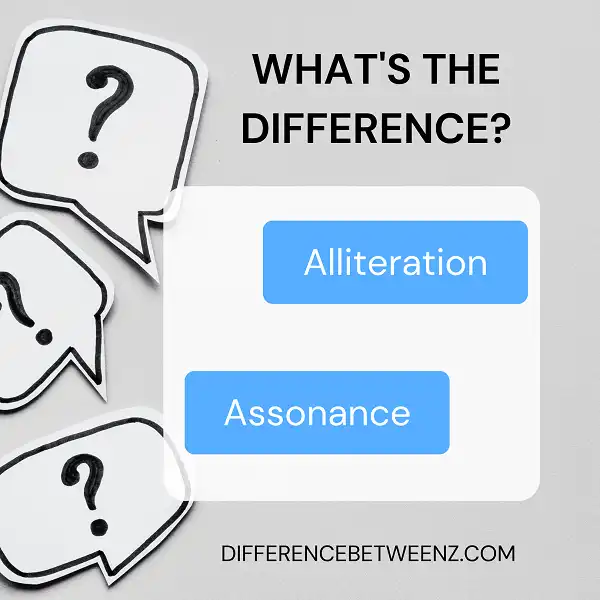Alliteration and assonance are two of the most popular tools used to create rhythm and style in writing. However, though these terms are often thrown around as if they indicate the same concept, alliteration and assonance actually have very different meanings with slightly different uses when it comes to writing. In order to fully understand how each of them can be employed in the best way possible, one must first know what makes these tones differ – that is exactly what this blog post will do! We will discuss the differences between alliteration and assonance, exploring their nuances in order to properly explain their purpose so you can make full use of them for your next project.
What is Alliteration?
Alliteration is a literary device used in poetry to create rhythm and emphasize certain ideas or points. Alliteration consists of repeating the first consonant sound in a series of words, often within the same line. By using alliteration, poets are able to draw attention to specific aspects of their writing, making it easier for readers to find important motifs and language patterns. Alliteration also provides an opportunity for poets to introduce internal rhymes, providing music and a sense of flow throughout the poem. All these elements work together to help reinforce the writer’s message, express emotion and bring life to the reader’s experience.
What is Assonance?
- Assonance is an important literary device used often in poetry. Assonance is the repetition of vowel sounds in a string of words but does not involve the use of exact same word. Assonance can be used for any type of poem for poetic effects like increasing rhythms and creating an engaging atmosphere.
- Assonance can also be employed to provide a rhyming effect though it is not as effective as a perfect rhyme, still it has its own charm. Assonance has been used by many renowned authors and poets, likening its purpose in achieving a specific sound as taking away breaths from between words.
- Poets even use assonance to suggest a certain sentiment or to make alliteration work with more consonants. Assonance is one of the oldest literary techniques that continue to enhance classic works of literature in modern times.
Difference between Alliteration and Assonance
Alliteration and Assonance are two poetic techniques that are immensely helpful in creating melodic verse.
- Alliteration is the repetition of consonant sounds, particularly at the beginning of words, such as “Peter Piper picked a peck of pickled peppers.”
- Assonance occurs when similar vowel sounds are repeated within the same line, like in the phrase “Hear the mellow wedding bells”.
- Alliteration serves to slow down readers and draw attention to certain passages while assonance plays a role in helping to create rhythm and unity within lines.
Both alliteration and assonance offer poets a means to emphasize certain points they may wish to make or moments they hope will stand out in the reader’s mind.
Conclusion
Alliteration and assonance are both sound devices that can be used in poetry or prose. Alliteration is the repetition of initial consonant sounds, while assonance is the repetition of vowel sounds. While these two terms are often used interchangeably, there is a subtle distinction between them. Alliteration creates a rhythmic effect by repeating sounds at the beginning of words, while assonance creates a more mellow mood by repeating vowel sounds within words.


